Why are University of Texas athletic teams known as Longhorns?
Mascots for American colleges and universities are usually connected to the rise of intercollegiate sports, particularly football, in the late 19th and early 20th centuries. Some nicknames are simply a university’s colors: the Harvard Crimson, the Syracuse Orange, or Cornell University’s Big Red. The stories behind others, though, are as diverse as the mascots themselves. Michigan has often been called the “Wolverine State,” as wolverine pelts were popular in trade between Native Americans and European settlers of the 18th century. When the University of Michigan fielded its first football team in 1879, the Wolverine nickname was an obvious and appropriate fit. In the early 1880s, football players from Princeton University donned orange and black striped jerseys and stockings as part of their uniforms, which prompted local sportswriters to refer to the team as the Tigers. A dozen track athletes from the University of California competed in their first out-of-state competition in 1895, and brought along a blue banner that featured a gold grizzly bear – the symbol of California found on its state flag. Thereafter, Cal teams would forever be known as the Golden Bears. In 1908, Phillips Miller, a vendor in Gainesville, Florida, wanted to sell college pennants of the two-year old University of Florida, but realized it didn’t yet have a mascot. Miller’s son, Austin, suggested the alligator, as it was native to the state and likely hadn’t been claimed by anyone else. The pennants were ordered, sold, and UF teams became known as the Gators.
Above: An early University of Florida pennant with an alligator mascot.
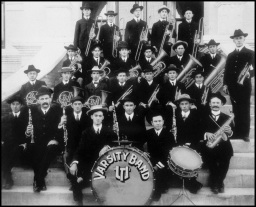 When the University of Texas first played football in 1893, the team was referred to as “‘Varsity.” The term – with an apostrophe in the front – was a nationally accepted abbreviation of the word “university.” (Think: university -> ‘versity -> ‘varsity.) Browse through early editions of the Cactus yearbook, and the label can be found everywhere: ‘Varsity Band (photo at left), ‘Varsity Glee Club, ‘Varsity Debate Team, as a generic expression for a University organization. (It wasn’t until after World War II that the word “varsity” referred to the “A” team in high school sports.) In Texas, from the 1880s to the 1920s, a person studying at ‘Varsity was understood to be enrolled at the University in Austin, while someone going to the College was a student at the A&M College of Texas, or “AMC,” in College Station.
When the University of Texas first played football in 1893, the team was referred to as “‘Varsity.” The term – with an apostrophe in the front – was a nationally accepted abbreviation of the word “university.” (Think: university -> ‘versity -> ‘varsity.) Browse through early editions of the Cactus yearbook, and the label can be found everywhere: ‘Varsity Band (photo at left), ‘Varsity Glee Club, ‘Varsity Debate Team, as a generic expression for a University organization. (It wasn’t until after World War II that the word “varsity” referred to the “A” team in high school sports.) In Texas, from the 1880s to the 1920s, a person studying at ‘Varsity was understood to be enrolled at the University in Austin, while someone going to the College was a student at the A&M College of Texas, or “AMC,” in College Station.
In the early 1900s, newspapers began to set aside extra room for stories about athletic events and scores, which evolved into today’s sports sections. But journalists who covered sports couldn’t simply refer to a team as ‘varsity, as that could be applied to either school, and always writing out the full name – the University of Texas football team, for example– was too cumbersome. Instead, the use of mascots as team names became popular, and if a university didn’t have a nickname, sportswriters (as was the case with Princeton) might try to invent one.
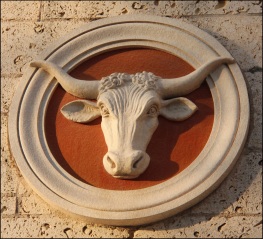 A month into the 1903 fall term, Alex Weisberg, then editor-in-chief of the weekly Texan student newspaper, asked David Frank, then the sports reporter, to refer to UT athletic teams as Longhorns in every article, “and we’ll soon have a name.” The Texas longhorn was a descendent of cattle imported by Spanish settlers in the late 1600s, and its impressive size and strength had made it a favorite symbol associated with the Lone Star State. Frank agreed, and starting in November, the name “Longhorns” (and sometimes “Long Horns”) appeared in stories about the football team.
A month into the 1903 fall term, Alex Weisberg, then editor-in-chief of the weekly Texan student newspaper, asked David Frank, then the sports reporter, to refer to UT athletic teams as Longhorns in every article, “and we’ll soon have a name.” The Texas longhorn was a descendent of cattle imported by Spanish settlers in the late 1600s, and its impressive size and strength had made it a favorite symbol associated with the Lone Star State. Frank agreed, and starting in November, the name “Longhorns” (and sometimes “Long Horns”) appeared in stories about the football team.
On November 13, UT traveled north to what was then the Oklahoma Territory to play the University of Oklahoma and left with an 11 – 5 win, though The Daily Oklahoman newspaper out of Oklahoma City published the headline “Rangers Won It” in an attempt to name the team from Austin. “The Texas Rangers won a very exciting game from the Norman University yesterday afternoon,” reported the Oklahoman. The Texan, though, would have none of it, and promptly corrected the Oklahoman on its error.
The Texan kept it up into the spring of 1904, and expanded to the baseball and track teams, as well as the University’s debate team. With a debate scheduled in Austin against the University of Missouri, the paper explained, “The debate will be the first time the Tigers and Longhorns have met on the intellectual gridiron.”
Frank became the Texan’s editor-in-chief in 1905 and continued the campaign. By 1907, the nickname was in use by the entire University community, and the Athletic Council officially recognized the Longhorn as the University of Texas mascot.
Above: The first Longhorn “swag” appeared in 1913 when recent graduate (and future Board of Regents chair) Lutcher Stark donated orange blankets to the football team that read “Texas Longhorns.” One of the blankets is on display in the Stark Center, headquartered at the north side of the stadium.

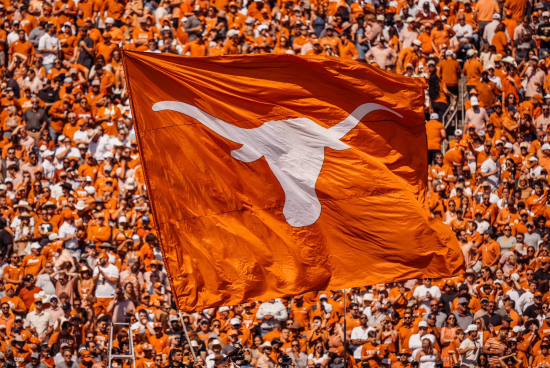
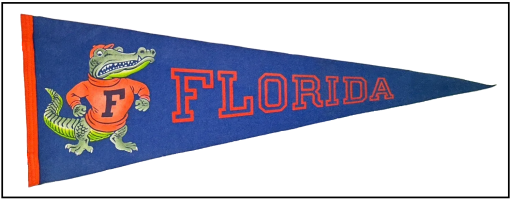
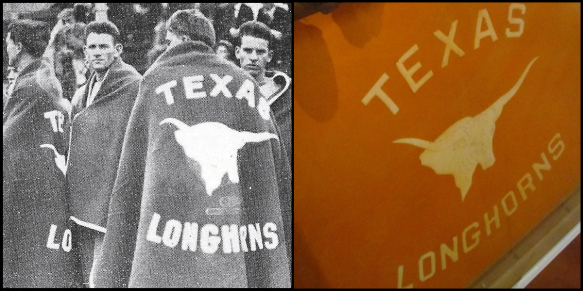
I love Weisberg’s approach: “Just repeat it enough and eventually it’ll stick.” Seems to be the same approach many of our current politicians take. 😉